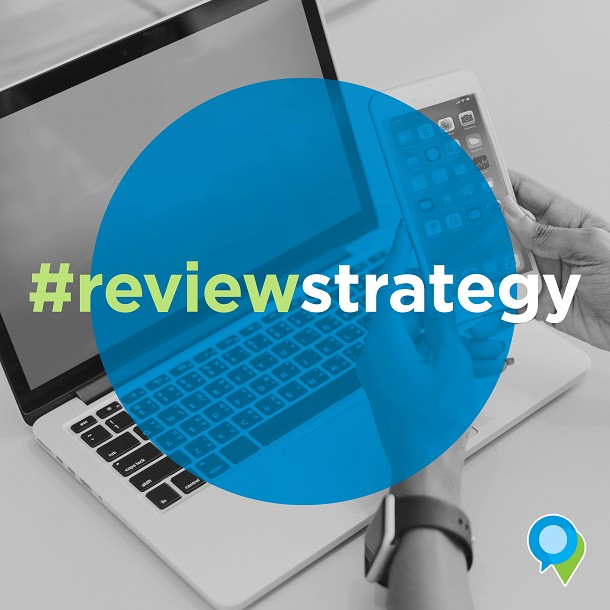12 Steps to Creating an Effective Online Review Strategy
Improving online review ratings is a strategic necessity for franchises and multi-location brands as more customers engage with them via online listings – and expect a response.
Companies that adopt effective online review strategies are reaping the benefits and typically see an increase of 0.2 out of 5 stars every six months. Most consumers won’t consider a business with less than four stars and 88% of consumers say online reviews influence their buying decisions.
It’s one of the reasons a growing number of global companies, particularly big brands, are formalising their review strategies as consumers’ flock to sites like Google, Facebook and TripAdvisor to get recommendations, read reviews and check star ratings. Collecting reviews and feedback at a store level allows brands to identify strengths and weaknesses for each location and can be used to fix operational shortcomings and identify successes.
It’s no longer enough for organisations to simply have a social media presence – they need to have a strategy for managing and responding to reviews.
Companies that adopt effective online review strategies are reaping the benefits and typically see an increase of 0.2 out of 5 stars every six months. Most consumers won’t consider a business with less than four stars and 88% of consumers say online reviews influence their buying decisions.
It’s one of the reasons a growing number of global companies, particularly big brands, are formalising their review strategies as consumers’ flock to sites like Google, Facebook and TripAdvisor to get recommendations, read reviews and check star ratings. Collecting reviews and feedback at a store level allows brands to identify strengths and weaknesses for each location and can be used to fix operational shortcomings and identify successes.
It’s no longer enough for organisations to simply have a social media presence – they need to have a strategy for managing and responding to reviews.
These 12 steps can help companies to formalize their review strategies:
Getting started:
1. Identify the relevant sites and directories for your industry, make sure you have created a page on these sites and have claimed them. Restaurants for example would have a presence on Facebook, Google, TripAdvisor, Yelp and Zomato.
2. Do not ignore a platform that is important for your industry - you will find rogue pages are created by customers, competitors or the sites themselves if you are not proactively managing the pages.
Rules of engagement:
1. Multi-location brands should not allow reviews on their national brand page – some customers will use this space only to complain. This results in brand pages with very low review scores which impacts overall online reputation. Reviews should be activated on individual store pages. Recent research among 163 multi-location global brands showed the top 10 franchises which adopted local strategies saw average sales growth of 12.8% - three times more than their competitors.
2. Ensure your review response tone matches the rest of your brand messaging - website, community management and review response message tone should all align. For example: playful brands should keep their positive responses in line with this persona. Negative review responses should always be handled in a more serious manner and you should always consider the tone of the reviewer before using too much humour.
3. Create a response template that has strategic relevant keywords to boost local SEO. For instance, a high-end restaurant would use words and phrases like ”quality steak”, “premium service” and “best restaurant”.
Respond to all reviews and ensure negative reviews are responded to within 24 hours and positive reviews within 48 hours.
4. Don’t admit to serious allegations online before you can conduct an investigation in-store. Always answer reviews diplomatically to protect the brand but also be sympathetic. Always take the conversation offline by offering a call to action E.g.: “We are so sorry to hear that you had a negative experience at our restaurant, please email customer-care@brand.co.za with your details so that we can get in touch.” A call to action is any method of getting the customer’s details and taking the conversation offline; Social Places have recently developed a link that can be left on a review response that a customer can easily click on to leave their details without the customer needing to duplicate their review.
5. Request reviews from your customers - over 80% of reviews are positive and 7 out of 10 people will leave feedback if they are asked to. Brands that encourage customers to write reviews will typically increase their review score over time.
6. Consider using live in-store customer feedback tools. These tools allow brands to deal with customer feedback immediately, often while the customer is still in the store and also help to keep negative reviews offline.
Personalization:
1. Personalise responses with the customer’s name and refer to specific events or happenings from their review. If, for example, a customer mentions that they had a wonderful shopping experience with their daughter, your response should include statements like: “We look forward to welcoming you and your daughter back again soon for another positive shopping experience.”
2. Typically, more than 50% of reviews contain a star rating and no comment. Utilise technology with customized response templates to respond to these ratings in scale.
3. Respond to all positive reviews - this creates customer loyalty and positive brand conversations.
Insights
1. It’s important to not only respond to reviews but use them as valuable business insights. When capturing these reviews, or using technology to capture them into a single dashboard, it is important that you have the ability to categorise the reviews and customer sentiment topics to understand the strengths and weaknesses of each store and then report on these findings in a simple and visual way to ensure operational teams can address the areas of improvement or reward the stores who are performing well.
Social Places have developed proprietary software to manage multi-location brands listings, as well as respond to reviews at scale from a single dashboard, with a personalised touch.
Get in touch: Social Places
socialplaces.co.za
ashleigh@socialplaces.co.za
+27825758636
TWITTER
FACEBOOK
LINKEDIN
socialplaces.co.za
ashleigh@socialplaces.co.za
+27825758636










